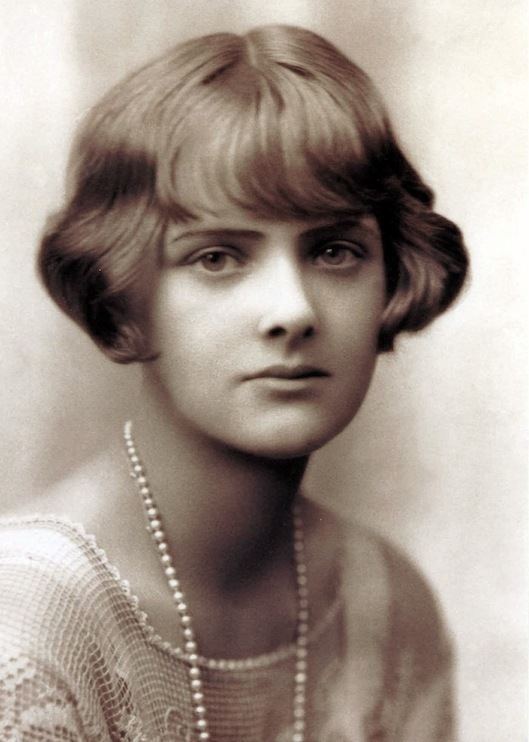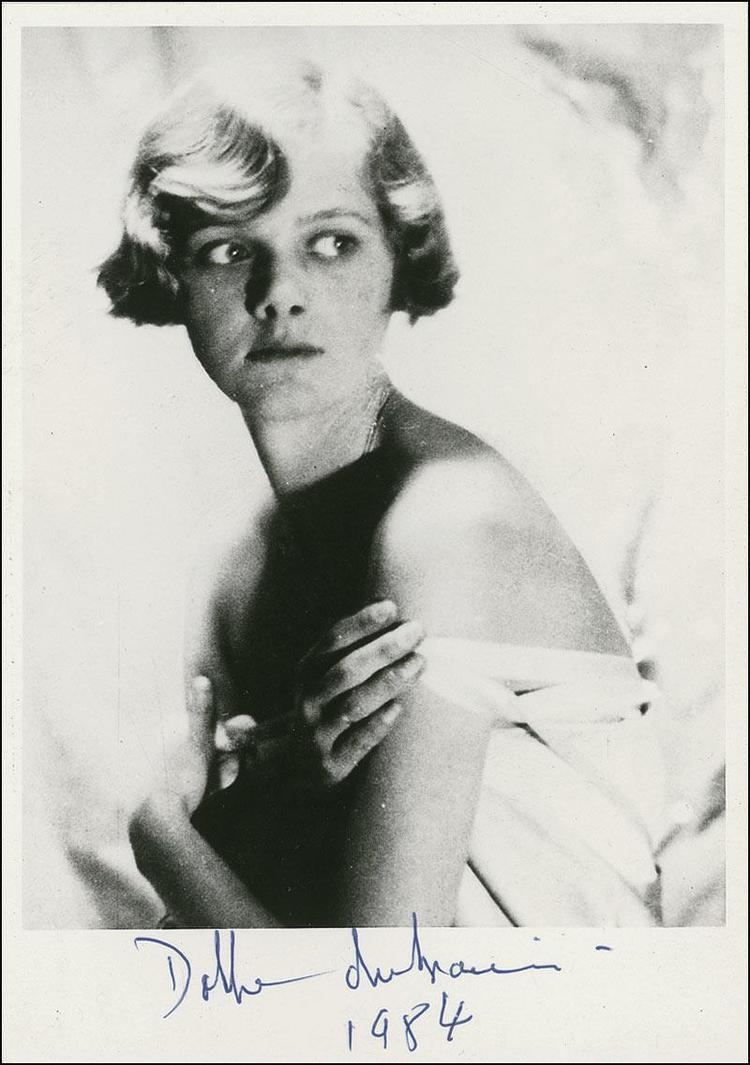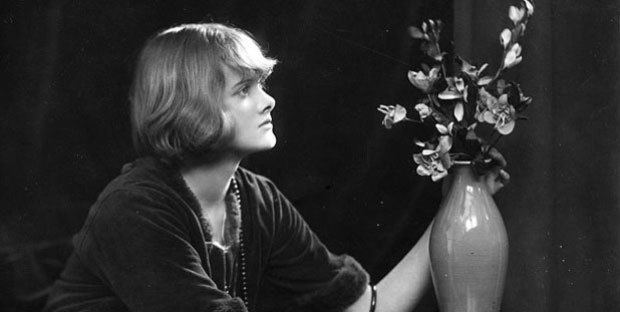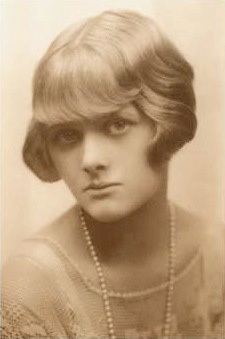Resting place Kilmarth Genre Literary fiction Occupation Novelist Name Daphne Maurier | Nationality British Role Author Period 1931–89 | |
 | ||
Born 13 May 1907London, England, United Kingdom ( 1907-05-13 ) Movies Rebecca, The Birds, Don't Look Now, Jamaica Inn Books Rebecca, Jamaica Inn, My Cousin Rachel, Frenchman's Creek, The House on the Strand Similar People Alfred Hitchcock, Gerald du Maurier, George du Maurier, Charlotte Bronte, Frederick Browning | ||
The make believe world of daphne du maurier
Dame Daphne du Maurier, Lady Browning, DBE (; 13 May 1907 – 19 April 1989) was an English author and playwright.
Contents
- The make believe world of daphne du maurier
- Personality meet daphne du maurier 1946
- Early life
- Novels short stories and biographies
- Plays
- Personal names titles and honours
- Accusations of plagiarism
- Personal life
- Secret sexual relationships
- Death
- Fiction
- Non fiction
- References

Although she is classed as a romantic novelist, her stories seldom feature a conventional happy ending, and have been described as "moody and resonant" with overtones of the paranormal. These bestselling works were not at first taken seriously by critics, but have since earned an enduring reputation for storytelling craft. Many have been successfully adapted into films, including the novels Rebecca, My Cousin Rachel, and Jamaica Inn and the short stories "The Birds" and "Don't Look Now/Not After Midnight".

Du Maurier spent much of her life in Cornwall where most of her works are set. As her fame increased through her novels and the films based upon them, she became more reclusive.

Her parents were the actor/manager Sir Gerald du Maurier and stage actress Muriel Beaumont, and her grandfather was the cartoonist and writer George du Maurier.

Personality meet daphne du maurier 1946
Early life

Daphne du Maurier was born in London, the middle of three daughters of prominent actor-manager Sir Gerald du Maurier and actress Muriel Beaumont. Her mother was a maternal niece of journalist, author, and lecturer William Comyns Beaumont. Her grandfather was author and Punch cartoonist George du Maurier, who created the character of Svengali in the novel Trilby. Her elder sister, Angela du Maurier, also became a writer, and her younger sister Jeanne was a painter.

Her family connections helped her in establishing her literary career, and du Maurier published some of her early work in Beaumont's Bystander magazine. Her first novel, The Loving Spirit, was published in 1931. Du Maurier was also a cousin of the Llewelyn Davies boys, who served as J. M. Barrie's inspiration for the characters in the play Peter Pan, or The Boy Who Wouldn't Grow Up. As a young child, she met many prominent theatre actors, thanks to the celebrity of her father. On meeting Tallulah Bankhead, she was quoted as saying that the actress was the most beautiful creature she had ever seen.
Novels, short stories, and biographies
The novel Rebecca (1938) was one of du Maurier's most successful works. It was an immediate hit, sold nearly 3 million copies between 1938 and 1965, has never gone out of print, and has been adapted for both stage and screen several times. In the U.S. she won the National Book Award for favourite novel of 1938, voted by members of the American Booksellers Association. In the UK, it was listed at number 14 of the "nation's best loved novel" on the BBC's 2003 survey The Big Read. Other significant works include The Scapegoat, The House on the Strand, and The King's General. The last is set in the middle of the first and second English Civil Wars, written from the Royalist perspective of her adopted Cornwall.
Several of her other novels have also been adapted for the screen, including Jamaica Inn, Frenchman's Creek, Hungry Hill, and My Cousin Rachel. The Hitchcock film The Birds (1963) is based on a treatment of one of her short stories, as is the film Don't Look Now (1973). Of the films, du Maurier often complained that the only ones she liked were Alfred Hitchcock's Rebecca and Nicolas Roeg's Don't Look Now. Hitchcock's treatment of Jamaica Inn was disavowed by both director and author, due to a complete re-write of the ending to accommodate the ego of its star, Charles Laughton. Du Maurier also felt that Olivia de Havilland was wrongly cast as the anti-heroine of My Cousin Rachel. Frenchman's Creek fared better in a lavish Technicolor version released in 1944. Du Maurier later regretted her choice of Alec Guinness as the lead in the film of The Scapegoat, which she partly financed.
Du Maurier was often categorised as a "romantic novelist", a term that she deplored, given her novels rarely have a happy ending, and often have sinister overtones and shadows of the paranormal. In this light, she has more in common with the "sensation novels" of Wilkie Collins and others, which she admired. An obituarist wrote: "Du Maurier was mistress of calculated irresolution. She did not want to put her readers' minds at rest. She wanted her riddles to persist. She wanted the novels to continue to haunt us beyond their endings."
Du Maurier's novel Mary Anne (1954) is a fictionalised account of her great-great-grandmother, Mary Anne Clarke née Thompson (1776–1852), who, from 1803–08, was mistress of Frederick Augustus, Duke of York and Albany (1763–1827). He was the "Grand Old Duke of York" of the nursery rhyme, a son of King George III, and brother of King George IV and King William IV. The central character of her last novel, Rule Britannia, is an aging actress, thought to be based on Gladys Cooper (to whom it is dedicated).
Du Maurier's short stories are darker: "The Birds", "Don't Look Now", "The Apple Tree", and "The Blue Lenses" are finely crafted tales of terror that shocked and surprised her audience in equal measure. As her biographer Margaret Forster wrote, "She satisfied all the questionable criteria of popular fiction, and yet satisfied too the exacting requirements of 'real literature'."
A recent discovery of a collection of du Maurier's forgotten short stories, written when the author was 21, provides some insight into her mature style. One of them, The Doll, concerns a young woman's obsession with a mechanical male sex doll; it has been deemed by du Maurier's son Kit Browning to be "quite ahead of its time".
In later life, she wrote non-fiction, including several biographies such as Gerald, her father's biography. The Glass-Blowers traces her French Huguenot ancestry and vividly depicts the French Revolution. The du Mauriers traces the family's move from France to England in the 19th century.
The House on the Strand (1969) combines elements of "mental time-travel", a tragic love affair in 14th century Cornwall, and the dangers of using mind-altering drugs. Her final novel, Rule Britannia (1972), plays with the resentment of English people in general and Cornish people in particular at the increasing U.S. dominance of Britain's affairs.
Plays
Du Maurier wrote three plays. Her first was an adaptation of her novel Rebecca, which opened at the Queen's Theatre in London on 5 March 1940 in a production by George Devine, starring Celia Johnson and Owen Nares as the De Winters and Margaret Rutherford as Mrs Danvers. After 181 performances, the production transferred to the Strand Theatre, with Jill Furse taking over as the second Mrs De Winter and Mary Merrall as Mrs Danvers, with a further run of 176 performances.
In 1943 she wrote the autobiographically inspired drama The Years Between about the unexpected return of a senior officer, thought killed in action, who finds that his wife has taken his seat as Member of Parliament and has started a romantic relationship with a local farmer. It was first staged at the Manchester Opera House in 1944 and then transferred to London, opening at Wyndham's Theatre on 10 January 1945, starring Nora Swinburne and Clive Brook. The production, directed by Irene Hentschel, became a long-running hit, completing 617 performances. It was revived by Caroline Smith at the Orange Tree Theatre in Richmond upon Thames on 5 September 2007, starring Karen Ascoe and Mark Tandy.
Her third play, September Tide, portrays a middle-aged woman whose bohemian artist son-in-law falls for her. The central character of Stella was originally based on Ellen Doubleday, the prominent wife of a United States book publisher. It imagined what Ellen might have been in an English setting and in different circumstances. Again directed by Irene Hentschel, it opened at the Aldwych Theatre on 15 December 1948 with Gertrude Lawrence as Stella. It closed in August 1949 after 267 performances.
Personal names, titles and honours
She was known as Daphne du Maurier from 1907 to 1932, when she married Frederick Browning. Still writing as Daphne du Maurier (1932–46), she was otherwise titled Lady Browning; Daphne du Maurier (1946–69). When she was elevated to the Order of the British Empire as Dame Commander in 1969, she was titled Lady Browning; Dame Daphne du Maurier DBE (1969–89), but she never used the title. According to Margaret Forster, she told no one about the honour, so that even her children learned of it only from the newspapers. "She thought of pleading illness for the investiture, until her children insisted it would be a great day for the older grandchildren. So she went through with it, though she slipped out quietly afterwards to avoid the attention of the press."
Accusations of plagiarism
Shortly after Rebecca was published in Brazil, critic Álvaro Lins (pt) and other readers pointed out many resemblances to the 1934 book, A Sucessora (The Successor), by Brazilian writer Carolina Nabuco. According to Nabuco and her editor, not only the main plot, but also situations and entire dialogues had been copied. Du Maurier denied having copied Nabuco's book, as did her publisher, pointing out that the plot elements used in Rebecca said to have been plagiarized were quite common.
The controversy was examined in a 6 November 2002 article in The New York Times. The article said that according to Nabuco's memoirs, when the Hitchcock film Rebecca was first shown in Brazil, United Artists wanted Nabuco to sign a document stating that the similarities were merely a coincidence but she refused.
The Times quoted Nabuco's memoirs as saying, "When the film version of 'Rebecca' came to Brazil, the producers' lawyer sought out my lawyer to ask him that I sign a document admitting the possibility of there having been a mere coincidence. I would be compensated with a quantity described as 'of considerable value.' I did not consent, naturally." The Times article said, "Ms. Nabuco had translated her novel into French and sent it to a publisher in Paris, who she learned was also Ms. du Maurier's [publisher] only after Rebecca became a worldwide success. The novels have identical plots and even some identical episodes."
Author Frank Baker believed that du Maurier had plagiarised his novel The Birds (1936) in her short story "The Birds" (1952). Du Maurier had been working as a reader for Baker's publisher Peter Davies at the time he submitted the book. When Hitchcock's The Birds was released in 1963, based on du Maurier's story, Baker considered, but was advised against, pursuing costly litigation against Universal Studios.
Personal life
Du Maurier married Major (later Lieutenant-General) Frederick "Boy" Browning in 1932. They had three children:
Biographers have noted that du Maurier's marriage was at times somewhat chilly and that she could be aloof and distant to her children, especially the girls, when immersed in her writing. Her husband died in 1965 and soon after Daphne moved to Kilmarth, near Par, Cornwall, which became the setting for The House on the Strand.
Du Maurier has often been painted as a frostily private recluse who rarely mixed in society or gave interviews. An exception to this came after the release of the film A Bridge Too Far, in which her late husband was portrayed in a less-than-flattering light. Incensed, she wrote to the national newspapers, decrying what she considered unforgivable treatment. Once out of the public spotlight, however, many remembered her as a warm and immensely funny person who was a welcoming hostess to guests at Menabilly, the house which she had leased for many years (from the Rashleigh family) in Cornwall.
Secret sexual relationships
After her death in 1989, references were made to her reputed bisexuality; an affair with Gertrude Lawrence, as well as her attraction to Ellen Doubleday, the wife of her U.S. publisher Nelson Doubleday, were cited. Du Maurier stated in her memoirs that her father had wanted a son; being a tomboy, she wished to have been born a boy.
In correspondence which her family released to biographer Margaret Forster, du Maurier explained to a trusted few her own unique slant on her sexuality: her personality comprised two distinct people – the loving wife and mother (the side she showed to the world); and the lover (a decidedly male energy) hidden to virtually everyone and the power behind her artistic creativity. According to Forster's biography, du Maurier believed the male energy propelled her writing. Forster wrote that du Maurier's denial of her bisexuality unveiled a homophobic fear of her true nature.
The children of both du Maurier and Gertrude Lawrence have objected strongly to the suggestions about their mothers. Michael Thornton maintained that Forster did not know du Maurier; those who did knew that she was not lesbian, although there was a good deal of 'play-acting'. "It was Menabilly, her 'house of secrets', and her father, that remained the enduring loves of her life, not Gertrude Lawrence or Ellen Doubleday."
Death
Du Maurier died on 19 April 1989, aged 81, at her home in Cornwall, which had been the setting for many of her books. Her body was cremated and her ashes scattered off the cliffs at Fowey, Kilmarth, Cornwall.
